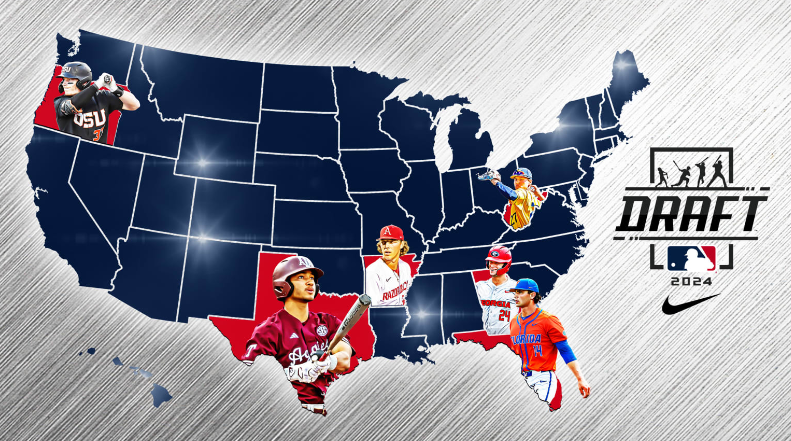
The 2024 Draft kicks off on Sunday, starting with a preview show on MLB Network, MLB.TV, MLB.com, and the MLB app at 6 p.m. ET. This year’s 20-round draft will have implications across the United States, Canada, and Puerto Rico.
The top overall pick could be between two elite-hitting middle infielders from Oregon State and West Virginia, or a standout slugger from Georgia. The first pitcher chosen might come from either Wake Forest or Arkansas. The top high-school pick race features a shortstop from California and another from Mississippi. While some regions of North America will have more representation than others, the entire draft class will showcase the diverse talent across the continent.
To preview this year’s crop of Draft picks, here are the top 2024 prospects from each state, drawing from MLB Pipeline’s Top 250 rankings and input from scouts and evaluators.
Each state links to the MLB Draft Tracker’s listing of eligible players. Some states might not have a player expected to be drafted this year, and not all eligible players are listed in the Tracker.
Alabama: Carter Johnson, SS, Oxford HS (No. 40) Johnson can handle velocity and demonstrate all-fields ability as a left-handed batter, earning a 55 grade for his future hit tool, with potential for 20-plus homers. His average speed might move the Alabama commit from shortstop to second or third base, where his above-average arm strength would be a good fit.
Alaska: Coen Niclai, C, Service HS Niclai, a two-time Alaska Gatorade Player of the Year, played in the MLB Draft League, hitting .360/.484/.440 over 31 plate appearances with Mahoning Valley this summer. The Oregon commit received praise at the MLB Draft Combine for his bat speed, defensive skills, and makeup, making him a potential Day 2 pick.
Arizona: Cam Caminiti, LHP, Saguaro HS (No. 15) This 6-foot-2 southpaw is a strong candidate to be the first prep pitcher drafted this year, thanks to his 93-95 mph fastball, two solid breaking pitches, and an above-average changeup. His athleticism (from playing center field) and consistent delivery should help him throw strikes at the next level, potentially making him a first-round pick.

Arkansas: Hagen Smith, LHP, Arkansas (No. 5) A Golden Spikes Award finalist, Smith set an NCAA Division I record with a 17.3 K/9 ratio, striking out 161 batters in 84 innings for the Razorbacks. His impressive stats are backed by his stuff: a deceptive 94-97 mph fastball that can reach triple digits, an 83-87 mph sweeping slider with plus-plus potential, and a splitter for added variety.
California: Bryce Rainer, SS, Harvard-Westlake HS (No. 10) Rainer, a Texas commit, is a top consideration for teams looking at prep bats high in this year’s Draft. He has five-tool potential, featuring loud contact, above-average run times, and plus arm strength. He has also improved his movements at shortstop, addressing defensive concerns and making him likely to stick at the position at the next level.
Canada: Nathan Flewelling, C, St. Joseph’s (AB) HS (No. 236) Flewelling edged out Ontario prep right-hander Josiah Romeo by one spot on the MLB Pipeline Top 250. The left-handed-hitting catcher impressed with his exit velocities at the MLB Draft Combine, and evaluators believe his bat speed will make him an average hitter. A Gonzaga commit, Flewelling is one of the youngest players in the class, turning 18 in November.
Colorado: Trey Gregory-Alford, RHP, Coronado HS (No. 105) Gregory-Alford, a Virginia commit, offers plenty of potential with his 6-foot-5 frame and a heater that reaches up to 97 mph. Although he faces criticism for his lack of a third pitch and some control issues, his success in international competition, including three saves for Team USA, boosts his stock.
Connecticut: Brady Afthim, RHP, UConn
Afthim, who served as the closer for UConn, played a key role in their surprise Super Regional run. The six-foot right-hander recorded eight saves with a 2.84 ERA and 27 strikeouts across 22 appearances (25⅓ innings). He relies heavily on a fastball that reaches 97 mph, complemented by a low-80s slider and mid-80s changeup that generate high whiff rates.
Delaware: Nathan Arterbridge, C, St. Georges Technical HS
Delaware’s Gatorade Player of the Year, Arterbridge posted a .439 batting average with six home runs this spring, impressing with his power and strong throwing arm behind the plate. He is committed to Missouri State.
District of Columbia: Everett Catlett, LHP, Georgetown
Standing at 6-foot-7, Catlett brings a formidable presence to the mound with a 91-93 mph fastball (touching 96), a notable low-80s slider, and an upper-80s changeup. This spring, he achieved a 3.36 ERA with 84 strikeouts over 77 2/3 innings.
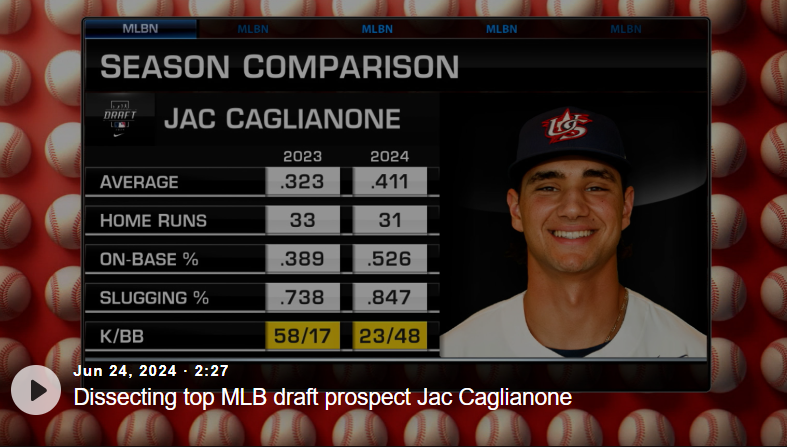
Florida: Jac Caglianone, 1B/LHP, Florida (No. 3)
Caglianone, who recorded 33 and 35 homers in consecutive seasons, boasts impressive power in the 2024 class. Despite some elevated chase rates, he significantly reduced his strikeouts this spring to just 26 over 316 plate appearances. On the mound, he can hit triple-digits and effectively induces swing-and-misses with his changeup. Teams eyeing the Gators star within the top five picks likely view him as a full-time position player going forward.
Georgia: Charlie Condon, OF/3B, Georgia (No. 2)
Condon led Division I in average (.433), slugging (1.009), OPS (1.565), and home runs (37), earning him the Golden Spikes Award this spring. Standing at 6-foot-6, the right-handed slugger receives at least plus grades for his hitting and power abilities, while his below-average speed suggests a probable move to a corner outfield position in the long term.
Hawaii: Jace Souza, OF, Kamehameha HS (No. 186)
Souza, a Texas Tech commit, could follow the path of 2023 third-rounder Devin Saltiban as a Day 2 selection from Hawaii. Known for his plus speed both on the bases and in center field, Souza wields a smooth left-handed swing that promises offensive potential.
Idaho: Dax Whitney, RHP, Blackfoot HS (No. 56)
Whitney, a 6-foot-5 right-hander, saw his fastball velocity increase to 90-94 mph this spring. He features two potentially above-average breaking pitches in his curveball and slider, enhancing his chances of becoming Idaho’s first prep pitcher drafted since 1967.
Illinois: Ryan Sloan, RHP, York HS (No. 19)
Standing tall at 6-foot-5 and weighing 220 pounds at just 18 years old, Sloan, committed to Wake Forest, possesses raw skills and size. His arsenal includes a 93-96 mph fastball and a mid-80s changeup, both potentially plus offerings, along with a low-80s slider that could also reach above-average levels. These attributes position Sloan well as a promising cold-weather pitching prospect.

Iowa: Brody Brecht, RHP, Iowa (No. 21)
Brecht stands out for his exceptional pitching abilities. As a former wide receiver for the Hawkeyes, he showcases a 96-99 mph fastball and an 87-89 mph slider, both receiving plus-plus grades. Some pitching departments are eager to harness his potential with these pitches. However, his history of control issues, evidenced by a 6.8 BB/9 rate in college, prevents him from cracking the MLB Pipeline Top 20 going into the draft weekend.
Indiana: Connor Foley, RHP, Indiana (No. 106)
Foley transitioned into a starting role at Indiana this spring, logging a 4.71 ERA with 82 strikeouts and 49 walks over 63 innings. His 93-95 mph fastball is notable for its induced vertical break, but the 6-foot-5 right-hander must improve his command to solidify himself as a professional starter.
Kansas: Kaelen Culpepper, SS, Kansas State (No. 31)
Culpepper boosted his draft stock by hitting for the cycle against Louisiana Tech in the NCAA regional and delivering a crucial go-ahead home run off Hagen Smith the next day. These performances were pivotal, especially after questions arose about his power following a .318 slugging percentage in the Cape Cod League last summer. Culpepper projects as an above-average hitter and, if needed, possesses Gold Glove potential at third base if he shifts from shortstop.
Kentucky: Ryan Waldschmidt, OF, Kentucky (No. 23)
Despite a torn ACL suffered during the Cape Cod League last year, Waldschmidt remains a strong candidate for the first round. The right-handed hitter showed increasing momentum throughout the spring, demonstrating a balanced approach and power that make him a formidable all-around batter. His potential transition from left field to center field in the professional ranks could impact his draft position on Sunday.
Louisiana: William Schmidt, RHP, Catholic HS (No. 16)
Standing at 6-foot-4, Schmidt possesses arguably the top curveball in this year’s draft class—a low-80s breaker with over 3,000 rpm of spin and significant movement. His mid-90s fastball is also impressive, with room for further growth. Despite being a high-school right-hander, Schmidt has one of the highest ceilings among prep pitchers this year, although he might have to wait a bit longer to hear his name called due to traditional preferences for left-handed pitchers in the draft.
Maine: Jeremiah Jenkins, 1B, Maine (No. 199)
While Jenkins may not receive the same attention as other power hitters in this draft class, he has consistently hit 20 or more home runs in each of the last two seasons with the Black Bears. His upright stance can appear unconventional, but he generates impressive power by swiftly driving his hands through the hitting zone.
Maryland: Jake Yeager, RHP, Archbishop Spalding HS
Named this year’s Maryland Gatorade Player of the Year, Yeager features a lanky delivery with significant extension from his 6-foot-4 frame. The Maryland commit places his low-90s fastball effectively and induces strikeouts with a sharp low-80s curveball.
Massachusetts: Mike Sirota, OF, Northeastern (No. 50)
Sirota was on track to potentially be a first-round pick, but his home run production dropped from 18 in 2023 to just seven this spring, causing his draft stock to slide. Some scouts attribute this decline more to timing than strength issues, believing that if the Huskies star can regain his timing, he has the potential for a 20-20 season given his above-average speed.
Michigan: Dante Nori, OF, Northville HS (No. 48)
Nori, son of Minnesota Timberwolves assistant coach Micah Nori, earns high marks for his nearly elite speed and is viewed as a natural center fielder at the next level. Committed to Mississippi State, he impresses with a disciplined approach at the plate and a knack for minimizing strikeouts while driving line drives.
Minnesota: Connor Wietgrefe, LHP, Minnesota
Standing 6-foot-2, Wietgrefe earned first-team All-Big Ten honors for the Golden Gophers, boasting a 2.77 ERA and 74 strikeouts over 78 innings. He delivers a fastball clocking 90-94 mph and utilizes a low-80s slider effectively from his three-quarters arm slot.
Missouri: Cole Gibler, LHP, Blue Springs HS (No. 128)
Gibler is a grounded left-handed pitcher showcasing an above-average 80 mph curveball, a promising sinking mid-80s changeup, and a straightforward delivery that aids in his command. While his fastball sits at 89-92 mph, there is room for improvement in velocity. Committed to Arkansas, Gibler could make an immediate impact if not selected high in this year’s draft.
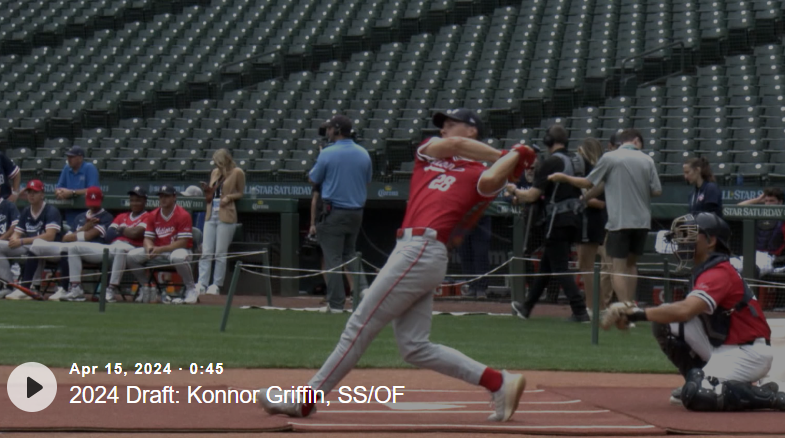
Mississippi: Konnor Griffin, SS/OF, Jackson Prep HS (No. 9)
Griffin stands out as the highest-ranked high school player in this year’s draft class, measuring an imposing 6-foot-4 and 215 pounds. He possesses four tools—power, speed, arm strength, and fielding—that all grade at least as plus-level attributes. While his lengthy right-handed swing may limit his overall hitting ability to average, his potential ceiling remains highly attractive for any team selecting within the top twelve picks this year.
Montana: None
Nebraska: Tyson Lewis, SS, Millard West HS (No. 39)
Named Nebraska’s Gatorade Player of the Year, Lewis impressed at the Super 60 Pro Showcase earlier in the year, particularly showcasing his speed in the 60-yard dash. He demonstrates versatility at the plate with his stance adjustments and possesses the bat speed and strength to potentially develop into a solid hitter for both average and power over time. His above-average arm strength will be valuable should he need to transition from shortstop to third base.
Nevada: Ty Southisene, SS, Basic HS (No. 111)
Despite his 5-foot-9 stature, Southisene receives commendations for his advanced baseball instincts, quick-twitch athleticism, and disciplined approach on the field. A commit to Tennessee, he will need to focus on refining his power game without compromising his overall hitting ability should he pursue a professional career.
New Hampshire: Kyle Roche, RHP, Franklin Pierce
Roche emerged as Franklin Pierce’s top starting pitcher during the spring season, logging a 4.23 ERA with 92 strikeouts across 72 1/3 innings. While his time in the MLB Draft League has been challenging, showcasing some command issues, Roche features a fastball clocking 92-95 mph and an 83-85 mph slider that induces swings and misses. Teams considering him in this year’s draft will be optimistic about his potential to improve his command at the professional level.
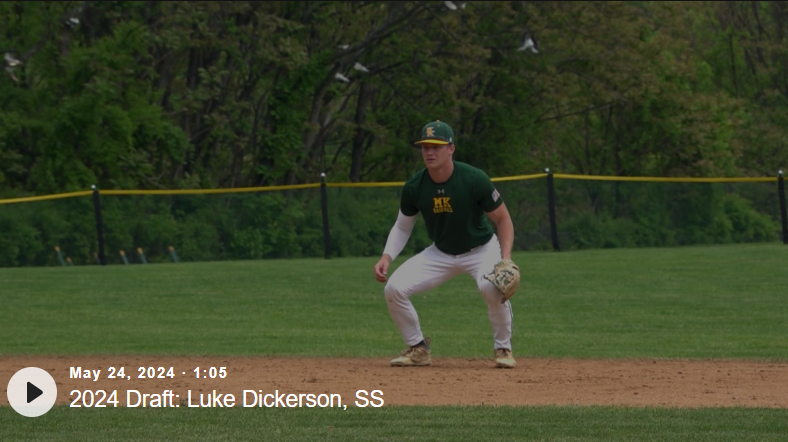
New Jersey: Luke Dickerson, SS, Morris Knolls HS (No. 49)
Dickerson brings considerable power to his 5-foot-11 frame, suggesting he could develop into an above-average power hitter in the professional ranks. His speed is a plus as well, and while he may transition from shortstop to second base or center field, he remains an intriguing option for any team looking for a versatile, toolsy player up the middle.
New Mexico: Brent Iredale, 3B/SS, New Mexico JC
Iredale earned NJCAA second-team All-American honors by posting an impressive .441/.576/1.000 slash line with 25 home runs in 57 games during his second season at New Mexico Junior College. He is committed to Arkansas for the upcoming season.
New York: Owen Paino, SS, Ketcham HS (No. 142)
Paino, a recruit for Ole Miss, stands at 6-foot-3 and showcases solid bat-to-ball skills as a left-handed-hitting shortstop. His development in harnessing his raw power will be crucial as he matures in professional baseball. With good footwork and instincts, Paino has a promising chance to maintain his position at shortstop.
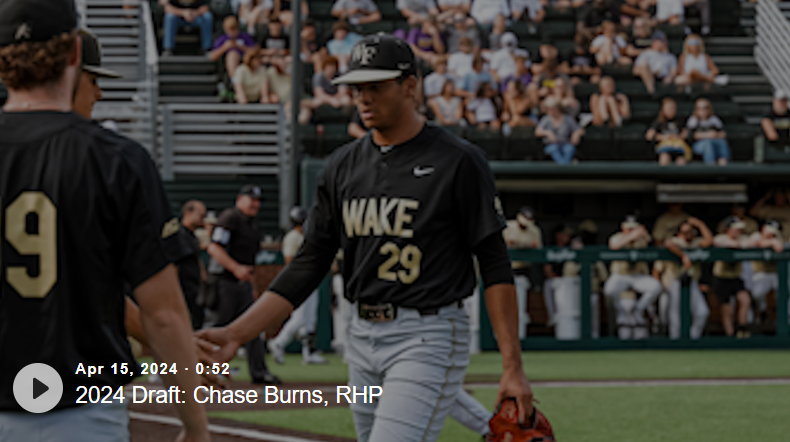
North Carolina: Chase Burns, RHP, Wake Forest (No. 6)
Burns showcases ace-level potential with his impressive arsenal, including a 97-99 mph fastball that peaks at 102 mph, a plus-plus slider, a notable curveball, and a solid changeup that he sparingly uses. His dominant performance led Division I with 191 strikeouts over 100 innings, posting a 2.70 ERA.
North Dakota: Drew Rerick, RHP, Davies HS (No. 140)
Rerick could surpass Zac Elgie as the highest high school pick from North Dakota since the 2008 Draft, possibly securing a higher spot if he indicates he’s willing to forego his commitment to Texas A&M. Standing at 6-foot-5, he features a 92-95 mph fastball along with two above-average breaking pitches in his curveball and slider.
Ohio: Nathan Archer, OF, Bowling Green State
Archer earned MAC Player of the Year honors after batting .300/.362/.599 with 18 home runs and nine stolen bases in 53 games this spring. He possesses decent power and is a plus runner, but scouts suggest he needs to refine his approach to increase contact rates at the professional level.
Oklahoma: Carson Benge, OF, Oklahoma State (No. 18)
Benge, who played both ways at Oklahoma State, is projected to excel as a position player rather than as a pitcher like former teammate Nolan McLean. With solid bat-to-ball skills and above-average power, coupled with strong arm strength, he is seen as a promising right field prospect once he focuses entirely on hitting.
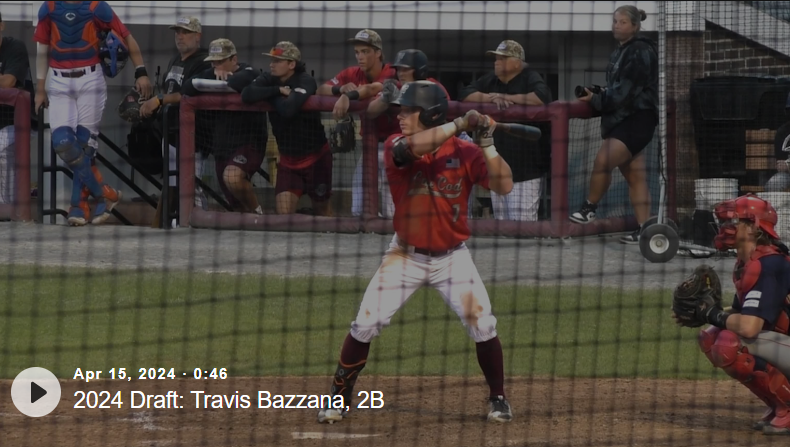
Oregon: Travis Bazzana, 2B, Oregon State (No. 1)
With a compact left-handed swing and excellent approach, Bazzana is arguably the best pure hitter in the class, hitting .407 with 37 strikeouts and 76 walks this spring. He also showcased power with 28 homers and has a strong chance of staying at second base, bolstering his potential to go first overall.
Pennsylvania: David Shields, LHP, Mt. Lebanon (No. 41)
Shields brings a 94 mph fastball, an above-average sweeping slider, and an average changeup, earning praise for his athleticism as a 6-foot-2 southpaw. Turning 18 in September, the Miami recruit could offer even more growth and be an exciting project for any professional pitching team.
Puerto Rico: Adrian Areizaga, SS, Leadership Christian Academy (No. 215)
Areizaga has shown solid power and plus speed with 60-yard dash times around 6.55 seconds. Some scouts question how his stiff swing will adapt to the pros, and his actions might suit center field better than shortstop.
Rhode Island: Griffin Crain, OF/LHP, Bishop Hendricken HS
Rhode Island’s Boys Athlete of the Year, Crain hit .512 with a .662 OBP entering the state’s Division I tournament. He hit a walk-off double in Game 1 of the best-of-3 state finals and threw a complete game to clinch the series. He is committed to Louisville.
South Carolina: PJ Morlando, OF, Summerville HS (No. 43)
Morlando gained attention by winning the High School Home Run Derby and MVP at the High School All-American Game last year but struggled to consistently translate his raw power into games this spring. He still projects as an above-average hitter, likely limited to left field.
South Dakota: Cael Frost, OF, South Dakota State
After two seasons at Kirkwood Community College, Frost became the Summit League Player of the Year at SDSU, setting a school record with 21 homers and finishing with a .343/.433/.742 line in 49 games. While scouts question his overall swing and athleticism, his impressive exit velocities could earn him a Draft opportunity.
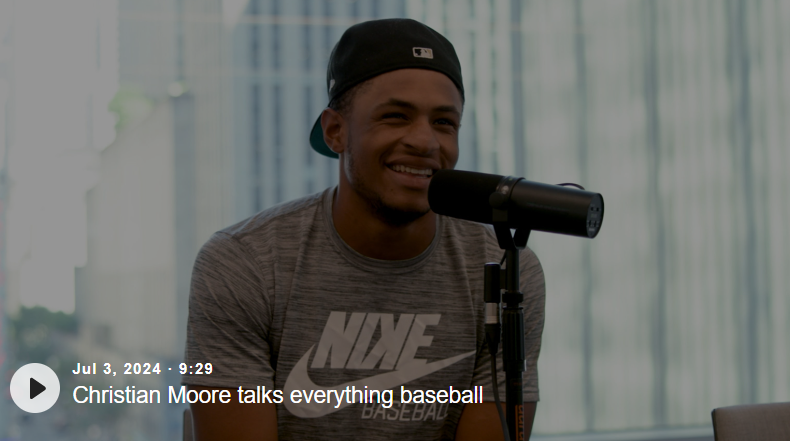
Tennessee: Christian Moore, 2B, Tennessee (No. 13)
Moore set the stage for the national champion Volunteers by hitting for the cycle in their Omaha opener and homering in the title clincher. He’s aggressive on pitches he can drive but also knows how to work a walk, showcasing a well-rounded offensive skill set. Though likely destined for second base, his defensive questions haven’t hindered his rise up Draft boards.
Texas: Braden Montgomery, OF, Texas A&M (No. 8)
Despite suffering a broken right ankle during the Super Regionals, Montgomery remains a strong Top 10 overall candidate. The switch-hitting outfielder, more effective from the left side, has a power-over-hit profile but has improved his plate discipline. His plus-plus arm makes him an ideal fit for right field.
Utah: Micah Ashman, LHP, Utah
The 6-foot-7 left-hander has been the Utes’ closer for the past two seasons, posting impressive numbers this spring (11 saves, 3.08 ERA, 26 strikeouts, three walks in 26 1/3 innings). He also fanned 10 over 8 1/3 solid innings in the Cape Cod League this spring. Ashman primarily relies on a fastball that touches 94 mph but also features an upper-70s slider and low-80s changeup.
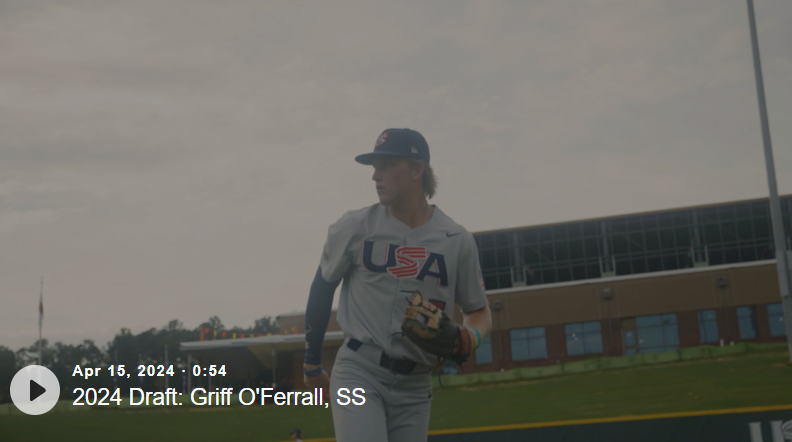
Virginia: Griff O’Ferrall, SS, Virginia (No. 38)
A career .344 hitter over three years with the Hoos, O’Ferrall boasts the bat-to-ball skills and patience to potentially achieve an above-average hit tool, though his limited power restricts his ceiling. His good speed and impressive instincts enhance his prospects of staying at shortstop.
Vermont: Zach Davis, RHP/INF, Colchester HS
Davis earned Vermont’s Gatorade Player of the Year after posting a 0.50 ERA with 38 strikeouts in 28 innings, alongside a 1.075 OPS in 13 games as a batter. The 6-foot-4 prep star, also a 1,000-point scorer in basketball, is likely to head to Bryant for his pitching talents.
Washington: Zach Swanson, RHP, Toutle Lake HS (No. 178)
The 6-foot-3 right-hander can be inconsistent with his delivery, but when he’s on, he showcases a 93-95 mph fastball and a tight 84-86 mph slider. Committed to Oregon State, Swanson has significant projection left, and with refined mechanics, he could make notable strides on the professional side if he signs.
Wisconsin: JD Dix, SS, Whitefish Bay HS (No. 75)
Hailing from Craig Counsell’s alma mater, Dix was hampered by a shoulder injury during last year’s showcase circuit. At his best, his simple swing from both sides of the plate, above-average speed, and sound defense make the Wake Forest commit a well-rounded infield prospect.
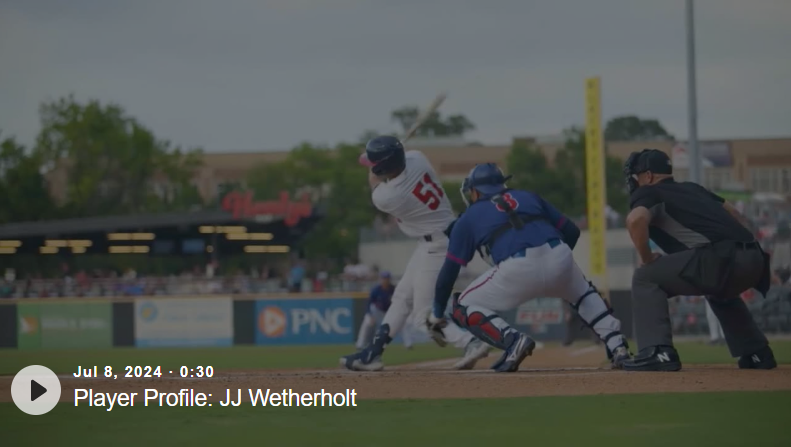
West Virginia: JJ Wetherholt, SS/2B, West Virginia (No. 4)
Wetherholt claimed the Division I batting title with a .449 average last year and followed it by hitting .331/.472/.589 with eight homers in 36 games this spring. His ability to make various types of contact and sound swing decisions from the left side has established him as one of the best pure college hitters in recent memory. He has been frequently mentioned in discussions about the No. 1 overall pick. However, recurring hamstring issues have raised defensive concerns heading into the Draft.

Leave a Reply